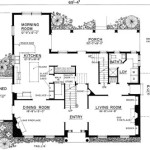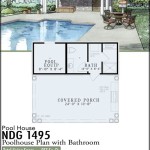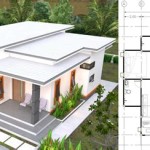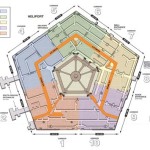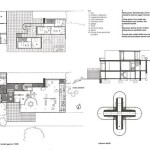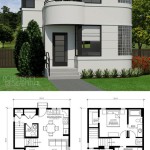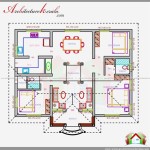Best House Plans With Master On Main
The concept of a "master on main" floor plan has gained significant traction in the housing market, appealing to a wide range of homeowners from young families to retirees. This design places the primary bedroom suite on the main level of the home, offering convenience, accessibility, and enhanced privacy. Understanding the appeal of this layout requires examining its benefits, design considerations, and suitability for diverse lifestyles.
A master-on-main house plan is fundamentally defined by the location of the primary bedroom suite, often referred to as the master suite, on the main living level of the house. This suite typically encompasses a bedroom, a private bathroom (often with a separate shower and tub), and a walk-in closet. In contrast to traditional designs where all bedrooms are located on the upper level, master-on-main layouts offer a distinct spatial arrangement.
Key Benefits of Master-on-Main House Plans
There are several compelling reasons why homeowners are increasingly drawn to master-on-main floor plans. These advantages span accessibility, future-proofing, and lifestyle enhancements.
One of the most significant benefits is enhanced accessibility. Having the primary bedroom on the main floor eliminates the need to navigate stairs, making it an ideal choice for individuals with mobility issues or those planning for aging in place. This consideration is particularly relevant for retirees or individuals with disabilities, allowing them to remain comfortably in their homes for longer.
Moreover, master-on-main plans provide increased privacy. By separating the primary bedroom from other bedrooms typically located on upper floors, homeowners can enjoy a greater sense of seclusion and tranquility. This separation can be especially beneficial for families with older children or frequent guests, offering distinct living zones within the home.
Another advantage lies in the convenience offered by this layout. Having the primary bedroom in close proximity to the main living areas, such as the kitchen, living room, and laundry room, streamlines daily routines. This proximity reduces the need to travel between floors for everyday tasks, saving time and energy.
Important Design Considerations
Designing a master-on-main house plan requires careful consideration of several factors to ensure functionality, aesthetics, and privacy. The placement of the master suite within the main floor layout is paramount.
The master suite should ideally be situated in a relatively quiet and private area of the main floor. Common placements include at the rear of the house, offering views of the backyard, or on one side of the house, separated from high-traffic areas like the kitchen and living room. Soundproofing the walls surrounding the master suite can further enhance privacy and reduce noise intrusion.
The connection between the master suite and other living spaces should also be carefully planned. While maintaining privacy is essential, the master suite should still be easily accessible from the main living areas. A short hallway or foyer can provide a buffer zone while maintaining convenient access.
The design of the master bathroom is another crucial element. Features such as a walk-in shower, a separate soaking tub, double vanities, and ample storage space contribute to a luxurious and functional bathroom experience. Consider incorporating universal design principles, such as grab bars and a curbless shower entry, to enhance accessibility and safety.
The walk-in closet should be spacious and well-organized, with ample shelving, hanging rods, and storage for shoes and accessories. Proper lighting is also essential for ease of use. Consider adding a dressing area or a full-length mirror to complete the master suite.
Suitability for Different Lifestyles
Master-on-main house plans are not a one-size-fits-all solution, but they cater to a diverse range of lifestyles. Evaluating the specific needs and preferences of the occupants is crucial in determining the suitability of this layout.
For families with young children, a master-on-main plan can offer convenience and peace of mind. Having the primary bedroom on the main floor allows parents to be closer to their children while still maintaining a degree of privacy. The separation between the master suite and the children's bedrooms can also help to minimize noise disruptions.
For empty nesters or retirees, a master-on-main plan can be an ideal choice for aging in place. The elimination of stairs reduces the risk of falls and allows for easier navigation of the home. The convenient proximity of the master suite to the main living areas also simplifies daily routines.
For individuals with mobility issues, a master-on-main plan is often a necessity. The accessibility provided by this layout allows them to live independently and comfortably in their homes. Features such as wider doorways, grab bars, and roll-in showers can further enhance accessibility.
Even for individuals without specific accessibility needs, a master-on-main plan can offer a luxurious and convenient lifestyle. The enhanced privacy, proximity to main living areas, and potential for a spacious and well-appointed master suite can make this layout an attractive option.
The overall size of the house and the desired number of bedrooms also influence the design of a master-on-main plan. Smaller homes may require creative space planning to accommodate the master suite on the main floor without compromising other living areas. Larger homes offer greater flexibility in terms of layout and design.
The architectural style of the house can also impact the design of the master-on-main plan. Some architectural styles, such as ranch or craftsman homes, naturally lend themselves to this layout. Other styles, such as traditional two-story homes, may require more careful planning to integrate the master suite seamlessly into the overall design.
Ultimately, the best house plan with a master on main is one that is tailored to the specific needs and preferences of the homeowners. Careful consideration of design elements, accessibility, and lifestyle factors will ensure a functional, comfortable, and aesthetically pleasing living space that meets their individual requirements.
Beyond the core design features, consider the integration of technology. Smart home features, such as automated lighting, temperature control, and security systems, can further enhance the convenience and comfort of a master-on-main layout, particularly for those seeking to age in place.
Natural light is another critical element. Large windows and skylights can flood the master suite with natural light, creating a bright and inviting space. Proper ventilation is also essential for maintaining air quality and preventing moisture buildup.
The exterior design should complement the overall architecture of the house and integrate seamlessly with the surrounding landscape. Consider adding a private patio or balcony to the master suite, providing a tranquil outdoor space for relaxation and enjoyment.
Finally, it's important to work with an experienced architect or designer who is familiar with master-on-main house plans. They can provide valuable insights and guidance throughout the design process, ensuring that the final result meets the homeowner's needs and expectations.

Modern House Plans By Gregory La Vardera Architect 6030 Floor

European Style With 4 Bed 5 Bath 3 Car Garage Monster House Plans Dream

Craftsman Floor Plan Main 303 473 Narrow House Plans Basement Lot

Henry Approved Love That All Three Bedrooms Share The Same Hallway Bedroom House Plans With Photos Best

Spacious And Open Best Floor Plans For Families Blog Homeplans Com

How To Choose The Right Floor Plan Niblock Homes

360 Best 4 Bedroom Family House Plans Floor

Minimalist Floor Plans With Porches Houseplans Blog Com

Pin On House Plans

Master Bedroom Floor Plans An Expert Architect S Vision

